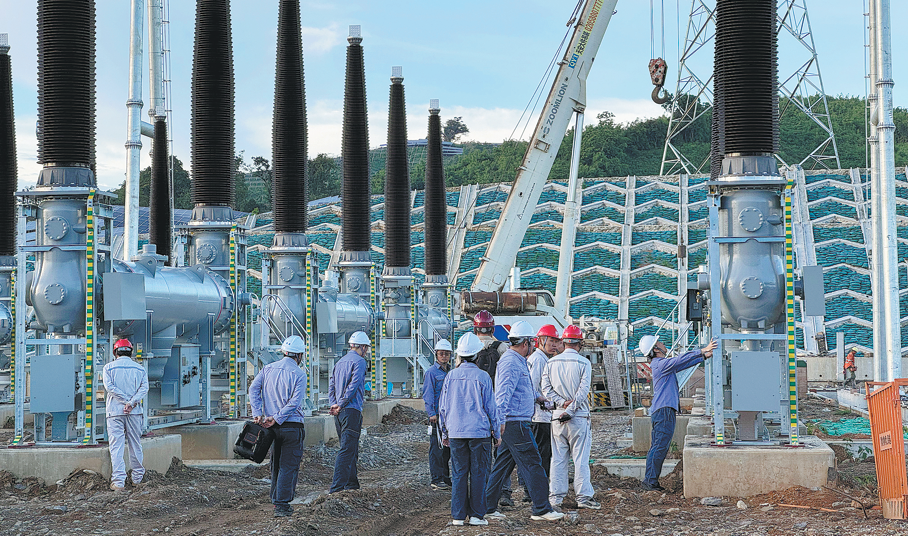Green projects power up China-ASEAN ties
Investment in sector rises over fivefold compared to 2014 figures


Clean energy cooperation between China and the Association of Southeast Asian Nations has increased dramatically over the past decade, with investment and installed capacity in joint hydropower, wind and solar projects experiencing exponential growth, said officials and industry experts.
Cumulative investment in these collaborative clean energy projects had increased more than fivefold by the end of 2024 compared to 2014, said He Yang, deputy head of China's National Energy Administration, during the seventh East Asia Summit Clean Energy Forum in Fuzhou, Fujian province, on Tuesday.
Over the same period, installed capacity saw an even more impressive 15-fold rise, underscoring the deepening partnership in sustainable energy development, He said.
"China and ASEAN have actively expanded power connectivity and promoted the development, utilization, and sharing of clean energy in recent years, paving the way for boundless future prospects," he said.
Since the inception of power trade between the two sides, cumulative transactions have reached approximately 75 billion kilowatt-hours, with green electricity accounting for over 90 percent of the total, data from the NEA show.
The energy sector's robust cooperation comes against a backdrop of strong overall trade ties. ASEAN has been China's largest trading partner for five consecutive years, while China has maintained its position as ASEAN's top trading partner for 16 consecutive years.
This enduring economic relationship provides a solid foundation for continued expansion in clean energy collaboration, aiming for enhanced regional energy security and sustainability.
According to Yi Yuechun, deputy head of the China Renewable Energy Engineering Institute, Chinese enterprises have significantly invested in ASEAN's power infrastructure.
By the end of 2024, China had established 16 cross-border transmission lines — with a voltage level of 110 kilovolts or above — with neighboring countries including Laos, Vietnam and Myanmar, facilitating over 75 billion kWh in cross-border power interchange, Yi said.
China's growing green investment footprint is also notable, making up 60 percent of foreign public investment in renewable energy within ASEAN between 2000 and 2020.
Yi emphasized the strategic importance of energy as a crucial pillar for regional sustainable prosperity and core component of China-ASEAN cooperation, as China and ASEAN have emerged as primary contributors to global renewable energy capacity additions.
He pointed out that both China and ASEAN have witnessed primary energy consumption growth rates significantly above the global average over the past five years, at 4 percent and 2.9 percent annually, respectively.
Yi underscored the complementary nature of the partnership, acknowledging the varying stages of development, energy endowments and unique advantages between China and ASEAN.
China's cost-effective new energy products and equipment have been instrumental in supporting ASEAN's energy transition efforts, he said.
This support is reflected in the burgeoning trade of the "new three items" — electric vehicles, photovoltaic products and lithium batteries — which reached $12.15 billion in 2024, a 74 percent increase from 2019, the institute said.
To elevate regional energy development to new heights, Yi suggested focusing on critical areas such as new energy development, energy storage technologies and smart grids, and seeking practical applications as well as technology demonstration cooperation.
He highlighted offshore wind power as a particularly promising avenue for future collaboration, considering China's rapid technological advancements in wind power, in addition to ASEAN's abundant offshore wind energy resources as well as vast market potential.
Offshore wind farms offer several inherent advantages, including high generation efficiency, proximity to major coastal load centers — where many of ASEAN's population and industrial activities are concentrated — and their suitability for large-scale development, he said.
Yi sought for the establishment of a practical cooperation platform to facilitate joint research, pilot projects, knowledge exchange, and potentially co-investment in this burgeoning sector.
zhengxin@chinadaily.com.cn




































